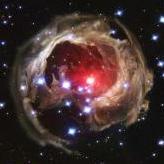Leaderboard
Popular Content
Showing content with the highest reputation on 10/04/2023 in all areas
-
Oh, thank you all, and delighted that my play arouses your curiosity. However, it is only a modest exercise in style, which I am far from daring to bring closer to the immense statue of the post-romantic god that Mahler is in my eyes (and for whom I have condemned myself since my childhood). His 10th is a symphony ghost. Only the adagio is original. The scherzo, I think, is also quite complete. But the other movements are more fragmentary (but we know that they are still quite successful for some passages). All this deserves to be checked, (I'll see what HL de la Grange says). Dying at 50 and letting us glimpse these worlds that have been open to his genius since at least the 9th or the song of the earth. 50 years may seem quite old to you, you young people, but I, who am 52, can tell you that we do not want to give up life at all and that we do not yet feel a foot in the grave, even if the health glitches are starting to annoy you. So, out of pity, don't say the obvious. It looks a bit like Malher, it's quite right, like an allusion, like a wink, but it's a hobby on my part, as we play with his electric, miniature, simplistic train, at the opposite of the demiurge world builder who is the great Gustav. I also believe that it is useless to make this precision because your ears know it. We can think of this or that composer, but everything remains in its place. Unfortunately, I can't give you an orchestral score since it doesn't exist. I usually write on 3 lines (or even sometimes 4) and then I orchestrate directly afterwards. I sometimes annotate the manuscript, for some orchestration ideas but quite often I already have the idea in mind of the desired mixtures. Here, the overall trajectory was therefore a brutal attack, like blindness, then its slow and progressive 'hemorrhagic' consequences, before letting the echo of a tonal world win, open to an already distant past. I am immersed in the reading of Thomas Mann's huge book, which is an absolute jewel of literature. No doubt, this too has contributed to some shades of what I have in mind at the moment... EDIT. At the rereading of this answer I really appear very pedantic. A thousand a thousand excuses. And again, thank you very much for listening and comments.2 points
-
Hi all, I've not posted anything in quite some time now so I hope you'll give my new work a chance. I'm at the stage where I would reall like some help before I print off the final draft. Musically I'm pleased with the work and I don't plan any great changes. Obviously I'm open to any comments about the music/musicality of the piece but also, I'm not a great engraver. I would like to know what you think I should amend in the score as much as I would like to know what you think musically. I should explain that this is a 'playback score'. I have sibelius play the music to my piano and I record live to USB from the piano so this isn't a midi sound performance, it's the Yamaha CVP 501 concert grand. To make the 'performance' as human as possible, I do take great pains to make the playback as authentic as I can. That means that there are lots of accents and tenutos, lots of excessive pedal markings and oddly tied notes in some places and also many micro tempo changes that all go towards humanizing the playback. Most of that would not appear in a real performance score. I would like to produce a performance score so if you could look past all the above mentioned and help me out, I would really appreciate it. A bit about the work. It's a suite of short, impressionistic piano pieces under the title - La Dama de Murumendi (The Lady of Wall Mountain). She is an ancient Basque Goddess that rules over the mostly inclement weather of that region. The whole things last 15 minutes so it's not exactly short as a whole but each 'vignette' is only about 3 mins each. The 1st piece is called 'Brisa'. It represents the Goddess in the aspect of the wind. The 2nd piece is called 'Lainoa'. This is the Goddess in the aspect of mist and fog. The 3rd piece is called 'Euria'. The Goddess in the aspect of a rain storm. The 4th piece is called 'Elurra'. It's the Goddess in the aspect of snow and frost. The 5th piece is called 'Berria'. It's the Goddess in the aspect of renewal, the sun finally coming out. I really would appreciate your opinions and any help you could give me. Thanks in advance to anyone who listenes, I appreciate it. The score https://www.dropbox.com/scl/fi/emvg8a0rvj12tqxgj05er/La-Dama-de-Murumendi-pdf.pdf?rlkey=t93ga24ltjuur8if1hoygaf4q&dl=0 The music https://www.dropbox.com/scl/fi/ncst5rw7ca0qhnhbe6v39/La-Dama-de-Murumendi.wav?rlkey=au94206kcz4c3g6uber9u402y&dl=01 point
-
Good morning everyone, Orbs is my last composition of the summer. Symphony Orchestra, presents itself as a long adagio between post tonal, post romantic... Exceeded... As you are now used to. Here again, fragments of my manuscript illustrate the music for the Youtube video. My wife finds this composition boring, I don't know if she's right (because I'm not of this opinion, how do you want me to be objective? Especially since these Orbs giving the title are also an allusion to a problem that has just happened to me with an alteration of my left retina... Who makes me see fantastic halos before my treatment! Blinding orbs or jellyfish. Very pretty and spectacular but not necessarily reassuring!)... Good listening, then, and a thousand thanks in advance for your comments.1 point
-
It's BBCso pro for the ensemble.. I also use here the passionate string set for passages in reduced numbers single strings as well as solo string samples for some solo passages (viola violin and double bass)1 point
-
1 point
-
Hey @olivercomposer, You are lucky that @gmm drops a review on your piece! Another octatonic beginning starts well. There's indeed reminiscent of Harry Potter as @DanJTitchener noted at the beginning. You really love octatonic modulation as you also have one in 1:35 from G minor to E minor with the "Aah" vocal (again haha!), with hexatonal C minor flavouring. I like that you go for a dimineundo at the end rather than having the brass bombarding till the end as in your previous pieces. I think of this piece rather depicting a castle occupied by the evil party rather than itself cursed. Thx for sharing! Henry1 point
-
Hi @olivercomposer, I agree with @Layne the piece is quite medieval or even middle-east. I enjoy the playfulness and energy in the piece as Layne has noted, but I don't think the music is angry or furious enough, unless it is a mock-anger or anger of a naive baby when it's also funny when they are angry. I love the orchestration in it. Thx for sharing! Henry1 point
-
Hey Peter, First of all, thanks for using the track for the variations! It's the track I choose and the only one unused LoL... For the opening theme you completely transform the theme from a naivety of nature to sadness of humanity when you mix the melody with more dissonant harmony. A very nice introductory figure in b.18 to introduce the repeating pattern! The repeating pattern is very interesting when you mix both triadal and quartal harmonies in it. The figure in b.28 piano comes from b.4 and that means you have already foreshadow the pattern in the theme and combine both figures in it. The change of harmony in b.44 is very nice. I love b.68 very much as it appears the only the strings are playing the repeating figure, maybe more of that will be even better! Nice counterpoint in section D, maybe the melody can be given to other instruments other than the 1st violin. The only thing I will say is that I want the piano to play the melody more! I would love to play the melody when imagining myself as the pianist haha. Thx for sharing! Henry1 point
-
Hi Mark @Mark101, You should really split the pieces to different posts! I will just review each piece to gain you more exposure haha. The first piece is amazing and I really feel like myself bathing in winds of demisemiquavers. I freakingly love that modulation to C harmonic minor, reminds me a lot of the Japanese anime. The piece is indeed impressionistic with those pentatonics and colour chords. A very enjoyable piece and I will continue to review the other three pieces (except Elurra, since I have already reviewed it before) Thx for sharing! Henry1 point
-
I've never seen rests in the middle of glissandi. Maybe you're thinking of scoops or fall-offs or slide-guitar techniques where the destination of the glissando is not specified and is implied to be about a whole step (as far as I know but I could be wrong). When writing a glissando in Musescore you must first select the two notes which will serve as the beginning of the glissando and the destination of the glissando. And yes, the duration of the first note is usually the duration of the glissando to the second note which could also, either be sustained or quickly released. I've written this piece entirely in Musescore 4 using Musesounds. I've used Musesounds in combination with BBCSO before by exporting an incomplete mp3 file from Musescore and importing a midi of just the tracks I wanted to substitute with a different sample patch into Reaper, but I didn't have to do that for this piece. Thanks for listening and for your review! Peter1 point
-
I really enjoy the energy in the piece. It feels very medieval which I am sure was your intention with the artwork the song is based on. I think the way it depicts anger is quite fun to listen to! You can hear the more "angry" portions of the piece, but it is also backed up with this playfulness. I feel it would be right at home in a video game, much like those farming sims. Especially one called Graveyard Simulator (yes, it is a rather grim and dark humored game, but fun nonetheless). I don't know what changes I would make other than just final things to polish and get the final sound where you want it. I really like the instrumentation as is!1 point




.thumb.png.8b5b433a341551e913a34392660bc95b.png)
